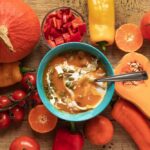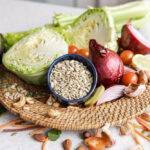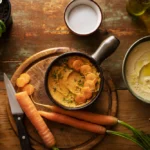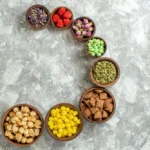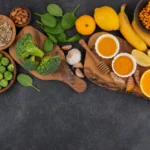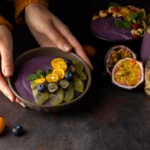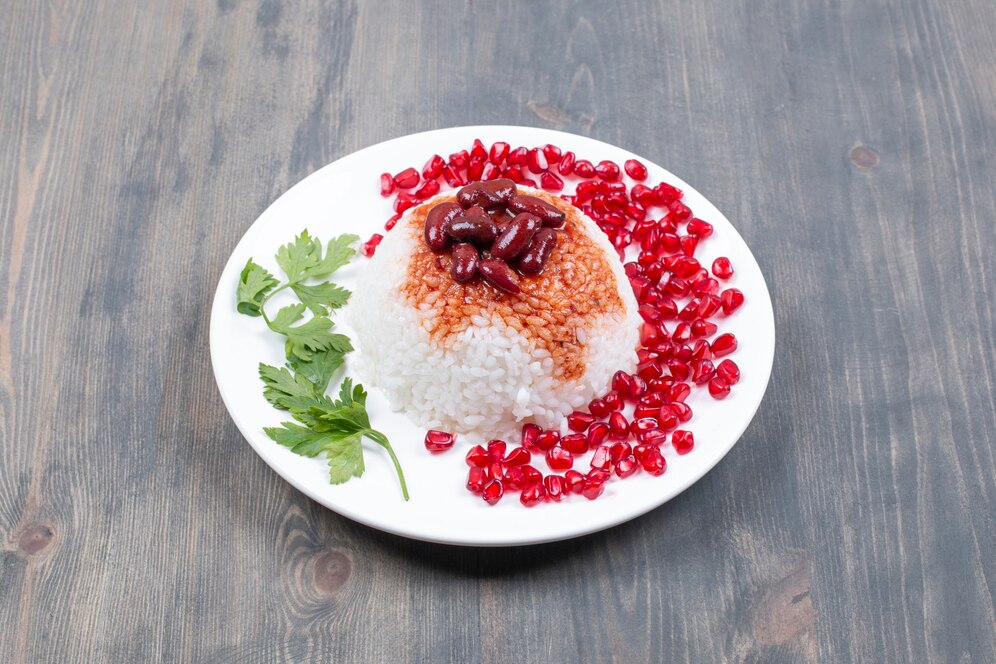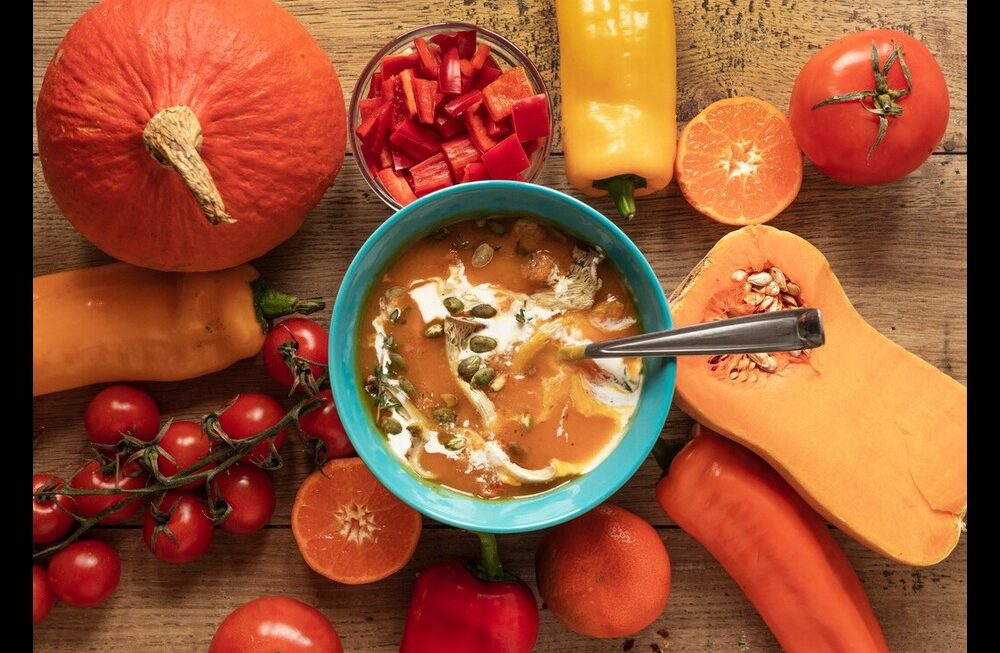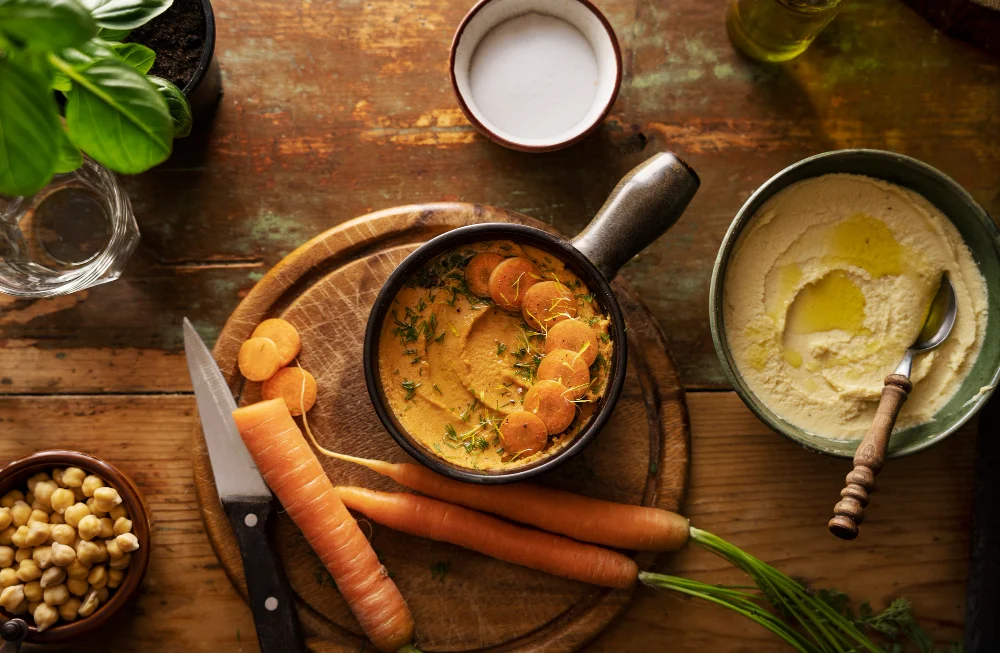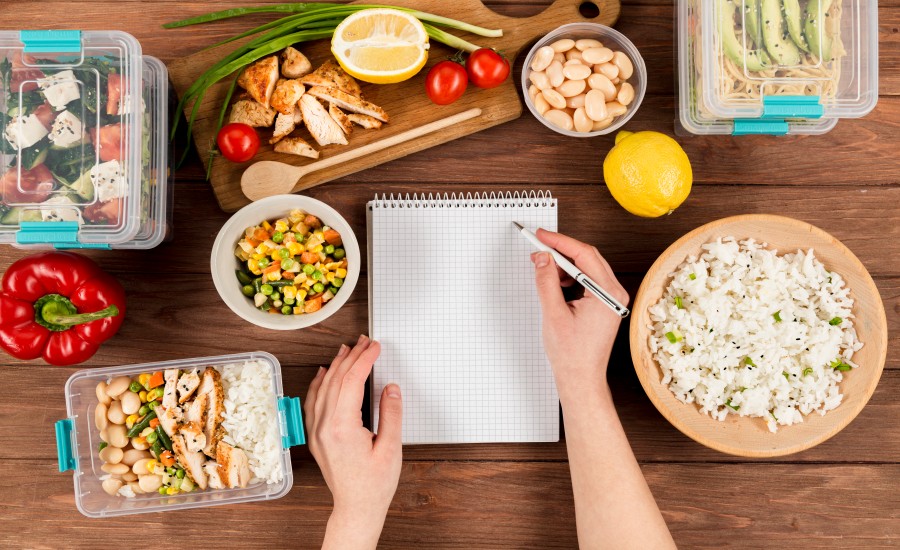Across cultures and continents, the humble pairing of rice and beans stands as a cornerstone of sustenance. Far from being merely basic, Vegan Rice and Bean Recipes offer a powerhouse of nutrition, affordability, and culinary versatility. This 360° analysis delves into this global staple through the practical lens of the Home Cook, the detailed view of the Nutritionist, the historical context from the Cultural Anthropologist, the environmental perspective of the Agricultural Scientist, and the innovative approach of the Culinary Creative. As we consider dinner options this evening, exploring the depth and potential of rice and beans reveals why this combination remains a foundational fuel for millions.
Foundational Fuel: The Global Power of Rice & Beans
From the Dal Bhat of Nepal and India to the Gallo Pinto of Costa Rica, rice and beans form the bedrock of countless traditional diets. This isn’t accidental. This pairing provides affordable, accessible, plant-based energy and protein, sustaining populations for millennia. In a vegan context, understanding how to prepare and elevate rice and bean dishes unlocks a world of satisfying, nutrient-dense meals that are both comforting and endlessly adaptable. They are more than just ingredients; they are a testament to culinary wisdom and agricultural synergy.
LENS 1: The Home Cook’s Kitchen – Practical Recipes & Techniques
For the home cook, mastering Vegan Rice and Bean Recipes is about practical techniques, reliable flavours, and creating comforting, budget-friendly meals.
- Perfecting the Basics:
- Cooking Dried Beans: Soaking beans overnight (or quick-soaking) reduces cooking time and improves digestibility. Cook thoroughly until tender (stovetop, pressure cooker, or Instant Pot). Common options in India include kidney beans (rajma), chickpeas (chana), black-eyed peas (lobia), lentils (dal – various types like toor, masoor, moong), mung beans (moong).
- Cooking Rice: Rinse rice well. Use appropriate water ratios (typically 1:1.5 or 1:2 rice-to-water, varies by type). Cook via absorption method (covered pot) or rice cooker. Basmati is popular in India, but explore brown rice for more fiber.
- Canned Beans: A great time-saver! Rinse well before using to remove excess sodium.
- Simple, Classic Recipes:
- Rajma Chawal (India): Kidney beans simmered in a spiced onion-tomato gravy, served with rice. A North Indian staple.
- Dal Bhat/Dal Rice (India/Nepal): Cooked lentils (dal) served alongside steamed rice. Countless variations exist based on lentil type and tempering (tadka). Extremely common in Gujarat and across India.
- Chana Masala with Rice (India): Chickpeas in a tangy, spiced tomato-based sauce.
- Black Beans and Rice (Latin America/Caribbean): Often simply cooked with onions, garlic, peppers, and spices.
- Mujadara (Middle East): Lentils and rice cooked together, often topped with caramelized onions.
- Flavour Foundations: Start with sautéed onions and garlic. Add spices appropriate to the cuisine (cumin, coriander, turmeric, garam masala for Indian; chili powder, cumin, oregano for Latin American). Tomatoes, vegetable broth, and fresh herbs (cilantro/dhania, parsley) build depth.
- Meal Prepping: Cook large batches of beans and rice on the weekend for quick assembly during the week. They store well in the fridge for several days.
- Daily Impact: Rice and beans provide the backbone for affordable, filling family meals. Knowing how to cook them well makes healthy eating accessible and sustainable long-term.
- Voice of Experience (Indian Home Cook): “Dal and rice, or rajma and rice, are comfort food! Learning to soak and cook beans properly in the pressure cooker was essential. It’s a weekly staple in our home.”
- Perspective Question: What’s your go-to method for cooking dried beans, and what’s your favourite type to use?
LENS 2: The Nutritionist’s Plate – Unpacking the Nutritional Synergy

From a nutritional standpoint, the combination of rice and beans is celebrated for its remarkable synergy and health benefits.
- Complete Protein Powerhouse: While individually incomplete, grains (like rice, lacking lysine) and legumes (like beans, lacking methionine) provide complementary amino acid profiles. Eating them together (even within the same day, not necessarily the same meal) supplies all essential amino acids needed for building and repairing tissues.
- Complex Carbohydrates: Provides sustained energy release, unlike simple sugars. Brown rice offers more complex carbs than white rice.
- Fiber All-Stars: Both beans and brown rice are excellent sources of dietary fiber. Fiber promotes digestive health, helps regulate blood sugar levels, lowers cholesterol, and increases satiety (feeling full).
- Mineral Rich: Good sources of iron (crucial for preventing anemia), magnesium, potassium, phosphorus, zinc, and manganese.
- Tip: Enhance iron absorption by pairing rice and beans with Vitamin C-rich foods like tomatoes, bell peppers, or a squeeze of lemon/lime juice.
- B Vitamins: Provide important B vitamins, including folate (especially in beans), thiamin, and niacin, vital for energy metabolism.
- Choosing Your Rice: Brown rice retains the bran and germ, offering significantly more fiber, vitamins, and minerals than white rice. However, white rice can be easier to digest for some and is culturally significant.
- Nutritional Deep Dive: Complementary Proteins Explained Proteins are made of amino acids. Essential amino acids cannot be made by the body and must come from food. Most plant foods are “incomplete,” meaning they are low in one or more essential amino acids. Grains are typically low in lysine, while legumes are low in methionine. By combining them, the weaknesses of one are compensated by the strengths of the other, creating a complete protein profile comparable to animal sources.
- Voice of Experience (Registered Dietitian): “Rice and beans are a nutritionist’s dream for plant-based eating. They offer complete protein, complex carbs, fiber, and essential minerals affordably. Choosing brown rice boosts the fiber and nutrient content even further.”
- Perspective Question: How can you intentionally add a source of Vitamin C to your favourite rice and bean dish to boost iron absorption?
LENS 3: The Cultural Anthropologist’s Table – A Staple Across Continents

Rice and beans aren’t just food; they are woven into the cultural fabric of societies worldwide, representing history, identity, and resilience.
- Global Ubiquity: This pairing transcends borders:
- Latin America: Gallo Pinto (Costa Rica/Nicaragua), Casamiento (El Salvador), Moros y Cristianos (Cuba), Tacu Tacu (Peru), Arroz con Gandules (Puerto Rico), Pabellón Criollo base (Venezuela), Feijoada accompaniment (Brazil).
- Caribbean: Rice and Peas (cooked with coconut milk).
- USA South: Hoppin’ John (black-eyed peas), Red Beans and Rice.
- Middle East: Mujadara (lentils/rice).
- Africa: Waakye (Ghana – rice/beans cooked with sorghum leaves).
- India: Rajma Chawal (North), Dal Bhat (North/East/Nepal), Dal Chawal (common everywhere), Bisi Bele Bath (Karnataka), Khichdi (various regions – often rice and lentils).
- Affordable Sustenance: Historically, rice and beans provided essential calories and protein for working populations, often forming the main meal of the day due to their low cost and high nutritional value.
- Agricultural Roots: Their prevalence is tied to the co-evolution of agriculture in different regions where both grains and legumes could be cultivated efficiently.
- Cultural Identity: Specific preparations often become signature dishes, integral to national or regional identity and celebratory meals (e.g., Hoppin’ John for New Year’s). The everyday dal-chawal is central to Indian home cooking across diverse communities, including Gujarat.
- Voice of Experience (Cultural Anthropologist): “The pairing of a grain and a legume, most commonly rice and beans, appears independently in agricultural societies globally. It’s a remarkably efficient solution for providing balanced nutrition from the land, deeply embedding itself in culinary traditions.”
- Perspective Question: What is the most significant rice and bean dish in your family or local culture?
LENS 4: The Agricultural Scientist’s Field – Sustainable Staples

The agricultural scientist looks at the cultivation, diversity, and environmental impact of rice and beans.
- Biodiversity: There is incredible diversity within both rice (thousands of varieties – long grain, short grain, basmati, jasmine, Arborio, black, red, brown) and beans (legumes broadly – kidney, black, pinto, navy, lima, chickpeas, lentils, peas, mung beans, pigeon peas/toor, etc.). Preserving this genetic diversity is crucial for resilience.
- Beans as Soil Builders: Legumes have a symbiotic relationship with rhizobia bacteria, allowing them to fix atmospheric nitrogen in the soil. This natural fertilization reduces the need for synthetic nitrogen fertilizers, making beans an environmentally beneficial crop, often used in rotation.
- Rice Cultivation Impact: Traditional paddy rice cultivation is water-intensive and can be a significant source of methane emissions (an anaerobic decomposition byproduct). Sustainable practices like alternate wetting and drying (AWD) or aerobic rice systems aim to mitigate this.
- Sustainability: As affordable plant-based protein sources, rice and beans generally have a much lower environmental footprint (carbon, water, land use) compared to animal agriculture, making them cornerstones of sustainable diets.
- Voice of Experience (Sustainable Agriculture Expert): “Legumes are fantastic for sustainable farming due to nitrogen fixation. While rice cultivation has environmental challenges, promoting diverse varieties and water-saving techniques is key. Together, they represent a highly resource-efficient way to feed people.”
- Critical Reassessment: Concerns exist about arsenic levels in rice, absorbed from soil and water. Rinsing rice thoroughly, cooking it with excess water (like pasta), and choosing varieties grown in lower-arsenic regions can help mitigate exposure.
- Perspective Question: How does understanding the agricultural benefits of beans (like nitrogen fixation) influence your appreciation for them?
LENS 5: The Culinary Creative’s Pot – Beyond the Basics: Flavour & Form

The culinary creative uses the classic rice and bean pairing as a launchpad for innovation, exploring new flavours, textures, and forms.
- Flavour Infusions:
- Spice Routes: Experiment with global spice blends – Berbere (Ethiopian), Cajun (US South), Jerk (Caribbean), Za’atar (Middle Eastern).
- Herbal Notes: Incorporate fresh herbs like mint, dill, oregano, or Thai basil beyond the usual cilantro/parsley.
- Aromatic Bases: Use coconut milk instead of water/broth for creamy curries (common in South Indian and Thai adaptations). Add lemongrass, galangal, or kaffir lime leaves.
- Textural Transformations:
- Patties & Burgers: Mash cooked beans and rice with binders (flax egg, breadcrumbs) and seasonings to form patties.
- Salads: Combine cooled rice and beans with chopped vegetables, herbs, and a vinaigrette.
- Bowls: Build customized bowls layering rice, beans, roasted vegetables, greens, sauces (tahini, peanut, salsa), and crunchy toppings (nuts, seeds, crispy onions).
- Stuffed Vegetables: Use a rice and bean mixture to stuff bell peppers, tomatoes, or zucchini.
- Fusion Fun: Combine elements from different traditions – e.g., Mexican-spiced black beans served with Indian lemon rice, or Thai green curry lentils with jasmine rice.
- Presentation: Move beyond simply spooning beans over rice. Layer ingredients in bowls, use molds for rice, garnish thoughtfully.
- Voice of Experience (Vegan Chef): “Rice and beans are the ultimate blank canvas! I love making crispy rice and bean cakes with avocado salsa, or adding smoky chipotle peppers to my black beans, or creating vibrant bowls with turmeric rice and spiced chickpeas.”
- Alternative Approaches: Swap rice for other grains like quinoa, millet (bajra), or barley for different textures and nutritional profiles.
- Perspective Question: What’s one unconventional flavour combination you’d be curious to try with rice and beans?
PERSPECTIVE INTERSECTION MATRIX
| INTERSECTION | HOME COOK | NUTRITIONIST | CULTURAL ANTHROPOLOGIST | AGRICULTURAL SCIENTIST | CULINARY CREATIVE |
| Home Cook | – | Applies nutritional guidelines | Cooks traditional recipes | Uses available varieties | May try creative variations |
| Nutritionist | Guides healthy preparation | – | Analyzes traditional diets | Assesses nutrient density | Balances health & innovation |
| Cultural Anthrop. | Explains recipe origins | Notes diet staples’ importance | – | Links food to agriculture | Contextualizes creative fusion |
| Agricultural Sci. | Informs on varieties/sourcing | Notes environmental nutrition | Explains crop domestication | – | Provides diverse ingredients |
| Culinary Creative | Offers new ideas to cook | Innovates within health params | Reinterprets traditional dishes | Showcases ingredient diversity | – |
Analysis: The Home Cook draws heavily on Cultural traditions and Practical needs, informed by Nutrition and utilizing ingredients provided by Agriculture. The Nutritionist validates the health benefits inherent in the Cultural staple. The Culinary Creative innovates upon this foundation, using diverse Agricultural products, while the Cultural Anthropologist provides the context for both traditional and modern interpretations.
MISCONCEPTION ANALYSIS
| MISCONCEPTION | REALITY |
| Rice and beans are incomplete protein unless eaten at the exact same time. | False. The body maintains a pool of amino acids. Consuming complementary proteins over the course of the same day is sufficient for protein synthesis. |
| Beans inevitably cause significant gas and bloating. | While possible due to fiber and oligosaccharides, proper preparation (soaking, thorough cooking), gradual introduction into the diet, and digestive aids (like asafoetida/hing in Indian cooking) can significantly minimize issues for most people. |
| White rice has no nutritional value and should always be avoided. | While brown rice is nutritionally superior (more fiber, vitamins, minerals), white rice provides energy (carbohydrates), is easily digestible, fortified in some countries, and culturally significant. It can be part of a balanced diet. |
| Rice and bean dishes are always bland or boring. | Absolutely false! The versatility is immense. Flavours depend entirely on the spices, herbs, aromatics, vegetables, and sauces used, spanning countless global cuisines. |
| You need meat/dairy to make rice and beans truly satisfying. | False. The combination of complex carbs, fiber, and complete plant-based protein, along with flavourful additions (spices, healthy fats, vegetables), makes vegan rice and bean dishes deeply satisfying and satiating. |
KEY TURNING POINTS
- Neolithic Revolution: Independent domestication of rice (Asia) and common beans (Americas), along with lentils/chickpeas (Near East), established them as agricultural staples.
- Columbian Exchange & Global Trade: Spread rice and bean varieties across continents, leading to new culinary combinations (e.g., rice with New World beans).
- Nutritional Science (20th C): Recognition of protein complementarity solidified the health rationale behind the pairing.
- Rise of Vegetarianism/Veganism: Highlighted rice and beans as affordable, accessible, complete plant-based protein sources.
- Modern Culinary Trends: Chefs and home cooks embrace global flavours and creative reinterpretations, elevating the humble pairing.
SYNTHESIS & RECOMMENDATIONS: Convergent Reflections – A Timeless, Nutritious Pairing
Vegan Rice and Bean Recipes embody a perfect storm of nutrition, affordability, sustainability, cultural significance, and culinary potential. They are a testament to how simple, whole foods can form the foundation of healthy and satisfying eating patterns globally. Understanding the nutritional synergy (Nutritionist), cultural roots (Anthropologist), agricultural context (Scientist), practical preparation (Home Cook), and creative possibilities (Culinary Creative) allows us to fully appreciate and utilize this timeless pairing.
- Recommendations:
- Embrace Variety: Explore different types of rice and beans/legumes available locally (like the diverse dals in India).
- Prioritize Whole Grains: Opt for brown rice when possible for added fiber and nutrients.
- Proper Bean Prep: Soak and cook dried beans thoroughly for optimal digestion and texture. Utilize canned beans for convenience.
- Boost with Veggies & Flavour: Don’t just eat plain rice and beans! Add ample vegetables, herbs, spices, and healthy fats.
- Explore Global Cuisines: Try recipes from different cultures to discover new flavour profiles.
- Get Creative: Use rice and beans as a base for bowls, salads, patties, and more.
This foundational vegan pairing offers endless possibilities for delicious, nourishing, and affordable meals suitable for any day of the week.
FURTHER AREAS OF EXPLORATION
- Deep Dive into Specific Regional Rice and Bean Dishes (e.g., Feijoada, Gallo Pinto, Bisi Bele Bath)
- Cooking with Heirloom Bean Varieties
- Advanced Techniques for Cooking Beans (Maximizing flavour, perfect texture)
- Minimizing Arsenic in Rice: Best Practices
- Rice and Bean Desserts (e.g., Sweet Red Bean Paste with Mochi, Rice Puddings)
- Fermenting Beans for Enhanced Digestibility and Flavour
